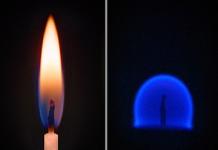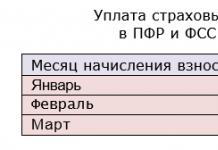The pace of suburban and dacha construction requires the emergence of not only new materials and technologies, but also new solutions related to the heating systems of private houses. This is due to the fact that the infrastructure usually does not keep up with the villages and housing estates growing like mushrooms after rain.
Frequent power outages, and sometimes even its complete absence, as well as the distance from gas mains, force owners to look for new ways to heat their homes. At the same time, increased demands are placed on the autonomy and versatility of heating units. Designed to meet these requirements combined heating boilers, operating on several types of fuel.
Advantages and disadvantages of using multi-fuel boilers
The use of multi-fuel heating units is justified in cases where the supply of traditional types of fuel is intermittent or unavailable. At the same time, combination boilers for heating a private house have several advantages :
- versatility;
- high operational reliability;
- the possibility of complete autonomy;
- additional efficiency by switching between different types of fuel;
- the ability to automatically control heat supply;
- readiness to use different types of fuel without readjustment.
At the same time, shortcomings combination boilers are their high cost, complex design and the dependence of some models on electricity (meaning units equipped with an automatic control system).
Design features of combined heating boilers
Combination boilers for the home are good because they eliminate dependence on the use of one type of fuel and, in its absence, allow you to switch to another. In addition, the vast majority of models provide a second circuit, which is used to organize hot water supply to a country house.
There are also powerful multi-circuit units that allow you to additionally connect other circuits of the heating system or a heated floor system.
A multi-fuel heating boiler can operate on gas, diesel fuel, any type of solid fuel, as well as electricity. To switch to another type of fuel, you only need to change the burner.
In some cases, units have two combustion chambers- one for solid fuel, and the other for gaseous or liquid fuel. In others - powerful heating elements, built into the water jacket of multi-fuel boilers. It all depends on the types of fuel planned for use, and therefore on the level of autonomy of the boiler.
The use of devices operating on several types of fuel is justified, for example, if the gas main is expected to be connected soon, but before that you can use firewood or diesel fuel.
If a gas-diesel combination is used, the unit will not even require readjustment, since a universal burner can be used for both types of fuel.
Or take a situation where the owners come to a country house only for the weekend. These days you can heat your premises using cheaper solid fuel. On the remaining days of the week, it is only important to maintain a positive temperature, which an electric heater or gas burner can easily handle.
Almost all multi-fuel boilers for heating a private home have an automatic system that switches to another fuel if further combustion with the selected fuel is impossible. The choice of combustion parameters and mode switching is set in the boiler settings.
Types of multi-fuel boilers
When choosing a heating unit, the consumer is primarily guided by accessibility And efficiency energy resources used. Depending on the availability of a particular fuel, combined heating of a private house can be built using boilers using certain combinations of combustible materials.
Gas-diesel boilers
Boilers operating on diesel fuel and gas- one of the most affordable options. Their relatively low cost is explained by the design, which for these two types of fuel differs only in the type of burner, which is not difficult to reinstall. Some models are equipped with a universal burner that operates on both fuels. Such devices are compact and have the least weight among their classmates.
The undoubted advantage of boilers of this type is complete automation. Human participation is minimized and consists of setting the unit settings. Excellent devices are produced by the Swedish “CTC”, additionally supplying them with electric water heaters of the main circuit. Among the manufacturers in the CIS countries, we can note the Russian Ziosab and the Ukrainian ATEM.
Boilers running on solid fuel and electricity
In rural areas, as well as villages remote from main gas pipelines, the best option is boilers for heating with wood and electricity. In fact, this is an ordinary solid fuel boiler. A special feature of its design are heating elements built into the water jacket and an automation and control unit.
The ease of use of the boiler comes from the principle of its operation: the unit basically works by burning solid fuel. If combustion stops, the temperature of the coolant drops, which is monitored by the automation, turning on the heating elements when the minimum set parameter is reached. Further operation of the unit using electricity allows you to maintain the temperature inside the system within specified limits. This allows the coolant not to cool down, for example, at night, or when re-filling firewood cannot be carried out on time.
Solid fuel boilers with gas burner
Units operating on solid and gaseous fuels have a more complex design due to completely different approaches to the combustion process. Such boilers have two combustion chambers, one for burning gas, the other for burning wood, coal, pellets, etc.
There are the simplest designs of boilers of this type that have only one chamber - for burning solid fuel. The use of gas in them implies the installation of gas equipment (burners, automation units, etc.), which requires calling a gas specialist, so it is a stretch to call such devices universal. In addition, the specific nature of burning solid fuels implies constant maintenance of the boiler, which reduces the convenience of its use significantly. Also, any combination boiler for heating a private home that uses wood and electricity is more designed to work with solid fuel, so the efficiency of the gas burned in it is lower than in traditional gas units.
Despite some disadvantages and difficulties in using such a boiler, sometimes it is the only possible option, and also very inexpensive. Also, do not forget about the lowest cost of firewood or pellets, as well as the possibility of its operation on some production waste. Products from Dakon (Czech Republic), Jama (Finland), Roca (Spain), and many domestic products have proven themselves to be excellent.
In recent years, new models have appeared on the market that operate on a completely different approach to burning solid fuels. These units are worthy competitors to boilers of all types, both in terms of efficiency and autonomy.
Currently, manufacturers are moving away from producing units that operate on a combination of only certain types of fuel, giving preference to universal models designed to burn all types of combustible materials.
Features of solid fuel boilers
As already noted, a solid fuel boiler has long been considered the least comfortable to use. Requiring constant maintenance, with low efficiency and also polluting the atmosphere, such a unit was used only in the absence of alternatives.
Modern models of solid fuel boilers use the principle pyrolysis combustion, based on dry distillation of fuel, during which generator gas is released, which is burned in a special combustion chamber. At the same time, the flame temperature reaches 1000 degrees Celsius, and there are no harmful impurities in the exhaust gases. The pyrolysis process can be adjusted, so such a multi-fuel boiler can operate on wood for up to 3 days, and only then switch to another type of fuel.
Other boilers of this type use the principle of gradual, ball by ball, burning of fuel. They are not as efficient as pyrolysis boilers, but they are also long-burning boilers and can be used in conjunction with automatic solid fuel loading units. The rotor of such machines periodically rotates, adding fuel to the combustion chamber. Long-burning solid fuel units with automatic loading can operate without operator intervention for up to 10 days.
Criteria for selecting multi-fuel boilers
When choosing a device, proceed from the type of fuel available in the area. The possibility of periodic maintenance of the unit is taken into account, as well as the priority type of fuel and the required duration of operation of the boiler on a particular fuel. Next, the thermal power of the unit is calculated and the number of heating system circuits that need to be connected is taken into account.
When choosing a multi-fuel boiler, pay attention to presence of a water heating circuit. With its help you can feed the hot water line.
It is also necessary to consider how well the electricity is supplied to your home. For frequent outages, it is better to choose a stand-alone model that does not provide electronic control.
The correct choice of a combination boiler will allow you to achieve autonomy of the heating system, the ability not to depend on one type of fuel, and will give you confidence in the future.
The existing classification of gas burners for heating boilers takes into account the principle of operation, air supply and formation of a fire torch. The design of the burner device determines the boiler power, main and additional functions, and the permissible type of fuel.
Types and types of burners of gas heating boilers
In a gas boiler, it is better to use the burner specified by the manufacturer in the operating instructions. The heat exchanger, the design of boiler equipment, is developed taking into account the type of installed burner device.According to their purpose, there are two types of gas burners:
- Burner devices for domestic use - capacity limited to 120 kW. Most often, this category includes atmospheric burners for gas boilers, the operation and maintenance of which are associated with a minimum number of problems.
The disadvantage of the devices is high fuel consumption and high requirements associated with the installation of boiler equipment.
In modern models, fan gas burner devices are increasingly used, used on gas household boilers, with a closed combustion chamber. - Gas burners for high-power industrial heating boilers. In industrial heating equipment, injection fan (blown) burners are installed. Performance varies from 120 to 250 kW.
- For natural gas.
- For liquefied gas.

The difference between the equipment is the diameter of the gas injectors and the operating gas pressure. Domestic boilers from well-known European manufacturers often install universal burners that can quickly be converted to use natural and liquefied gas.
The main classification is related to the operating principle of burner devices: the production of a gas-air combustible mixture, the supply of gas to the combustion chamber and other features.
Gas forced-fan burners (blown)
The blower burner device has a complex design, including a built-in fan or turbine. The gas-air mixture is prepared in precise proportions, thanks to forced and controlled air injection.A gas boiler with a forced-air burner is economical and highly efficient.
The blow burner device has the following features:
- Scope of application: fan burners, installed in boiler equipment with a closed combustion chamber: low-temperature condensing-type gas boilers and turbocharged models.
- Performance - just a few decades ago, fan-driven gas burners were installed exclusively for high-power boilers. Since then, household models of heating equipment have appeared, the operation of which is associated with the forced supply of air and exhaust of combustion products.
Low-power boilers with fan gas burners are designed for connection to radiator heating systems and heated floors. - Principle of operation - there are three basic modifications of burner devices, differing in the principle of producing the gas-air mixture. Mixing of gas and air occurs directly during the combustion process or before entering the nozzles.
In some modern models of boilers with a forced-air burner, the gas-air mixture is carried out with uniform partial mixing in a special chamber and on the burner device. - Removal of combustion products from the fan burner is carried out by force. An additional fan (turbine) is built into the smoke removal system. Design features (the presence of two turbines) affect the noise characteristics of the burner.
During operation, a uniform hum is produced. The fan makes so much noise that additional soundproofing of the room used as the boiler room will be required.
In condensing boilers, noise protection is provided. The soundproof housing reduces the intensity of noise pollution. - Automation - the blower burner is connected to the boiler automation. The microprocessor controller reads information coming from various sensors: gas pressure, incoming air and exhaust gases, temperature at the burner nozzle. The control unit automatically changes the performance of the burner device, focusing on the obtained parameters.
If necessary, a function for independent selection of the operating mode is provided. So, you can reduce the noise intensity by setting the fan speed to an acceptable minimum.
Blast burner devices have eliminated the main cause of flame separation from the burner, often found in atmospheric boilers, due to a sharp increase in pressure in the pipeline. The combustion intensity changes depending on the operating parameters in automatic mode.
Diffuse burners for gas combustion
The operating principle of a diffuse burner is associated with the separate supply of air directly into the combustion chamber and partial pre-mixing of the gas-air mixture. The operating features make it possible to increase and stabilize the gas pressure in front of the burner, and to achieve a stable flame even when the operating parameters are reduced.Diffuse burners are not widely used and are mainly installed in high-power industrial boilers. In domestic boilers, diffuse-kinetic burner devices are not found.
Injection gas burners (injection)
Injection burners are mainly installed in domestic heating boilers. The name is related to the operating principle used.The production of a gas-air mixture occurs in several stages:
- The device of an injection gas burner consists of several hollow rods through which gas is supplied under pressure, with injectors placed on them. The system is connected to the gas main.
- Gas, under pressure, passing through the nozzles, injects air in the combustion chamber, producing a gas-air mixture. The gas is burned in the form of small flames. For this reason, injection burners are also called flare or micro-flare burners.
The temperature of the flame core remains stable, regardless of external factors and heating of the coolant, which often leads to excessive fuel consumption. Compared to blow burner devices, injection models burn 15-20% more gas.
Classification of gas burners by type of adjustment
In addition to the principle of operation, gas burner devices for heating boilers are classified according to the type of adjustment and design features. Operating parameters affect thermal efficiency, economy and reliability.At the moment, four basic modifications of burner devices are manufactured:
- Single stage.
- Two-stage.
- Two-stage with smooth modulation.
- Modulated.
Single stage burners
In most cases, these are atmospheric gas burners for domestic heating boilers. The principle of operation is to alternately turn on and off the burner device. The frequency of turning on the burner depends on the cooling rate of the coolant and the operating mode set using a mechanical thermostat.Main features of single-stage burners:
- Operate regardless of power supply– regulation of the operating mode is carried out using a thermocouple, when heated, producing a low-potential voltage sufficient to ensure the operability of the device.
- Higher gas consumption– a feature of the operation of boilers with atmospheric gas burners is the need for constant burning of the igniter. The pilot burner flame acts on the thermocouple. When it fades, the gas supply is turned off. From the igniter fire, the main burner is ignited when the coolant cools.
A certain amount of gas is spent to maintain the operation of the igniter. Overconsumption is also observed due to the lack of precise adjustment of the operating temperature. - Reliability - gas non-volatile burners have a simple design, in which there is practically nothing to break. For this reason, devices rarely fail and last the entire service life declared by the manufacturer.
- Ignition - the igniter is ignited by a piezoelectric element or manually, using matches, through a special hatch in the boiler body.
Boilers with single-stage atmospheric burners are installed in areas where regular power outages occur.
Two stage burners
Two-stage types of gas burners, suitable for domestic boilers with precise adjustment of the minimum and maximum gas flow. The name suggests that the device operates in two modes set by the manufacturer, usually at 30% and 100% of the rated power.The operating principle of a two-stage burner is as follows:
- Combustion occurs continuously. The igniter is missing.
- The coolant is heated at 100% power. After reaching the set temperature, the burner does not turn off completely, as in the case of a single-stage analogue, but switches to the heating maintenance mode. The productivity of the burner device is reduced to 30 or 40%.
- The transition from one mode to another is controlled automatically, based on a microprocessor controller.
Smooth two-stage burners
The operating principle of smoothly switching devices is identical to two-stage burners. The only difference is that switching is performed without sudden jerks, which leads to the following advantages:- Precise and efficient control of the heating temperature of the coolant.
- Efficiency of fuel combustion.
- Versatility - smooth two-stage gas burners, suitable for heating boilers running on liquefied gas. After minor re-equipment, it is possible to connect the heat generator to a gas tank or cylinder installation.
- Dependence on electricity - a gas energy-dependent burner with two operating power modes, works only if there is a stable voltage in the network.
The number of stages indicates the number of operating modes of the burner device. Single-stage models operate only at full power, two-stage models alternate at 30% and 100% performance.
Modulating burners
The most economical burners are modulating. Operating range, from 10 to 100%. Reducing or increasing the burner power is carried out in fully automatic mode. The work is controlled by microprocessor automation, which reads the readings of various sensors and selects the optimal mode based on the information received.The accumulation of soot on the burner is virtually eliminated. Automation regulates the supply of air and gas to the burner, selecting such a ratio of the gas-air mixture that would ensure the most complete burning of fuel.
The modulating gas burner operates as a stand-alone device with a wide range of capabilities. Combustion is carried out in a constant mode. No igniter required.
Multistage modulating gas burners have several features and operating parameters that affect thermal characteristics:
- Automatic control of modulating burners- practically, it is a mini computer that calculates the optimal power based on the information received. The automation is simultaneously connected to the gas pressure sensor on the burner, room temperature sensors, turbine pumping air, etc.
The burner modulation is carried out in fully automatic mode. For the automation to work, special software is required, provided by the manufacturer when purchasing the boiler. - Versatility– a gas boiler with a modulating burner, initially set to natural gas parameters. To switch to liquefied gas, you will need to make small changes in the operating settings, which will take no more than 10-15 minutes. The modulation device will automatically adapt to changes in gas pressure on the burner.
- Cost-effective – achieved due to several features related to modulation. Burner adjustment, performed automatically, simultaneously takes into account all operating parameters: pressure and heating of the coolant, fuel quality, line characteristics, and the specified heating mode. During the heating process, almost 100% combustion of gas and the most complete and efficient use of the generated heat are ensured.
At the moment, modulation burners are available in closed and atmospheric types. Universal devices have appeared that, in addition to natural and bottled gas, can operate on liquid fuel.
How to choose the right gas burner for your boiler
Choosing the right burner yourself, without special skills, is almost impossible. Before choosing, it is worth getting competent advice from a specialist.When selecting, pay attention to the following aspects and technical characteristics:
- Performance– the power of the heating boiler depends on the power of the burner. For this reason, the burner device is selected identical in power to the heating unit.
- Burner noise characteristics– this factor is taken into account when selecting a blowing device. During operation, fans create high-intensity noise. Taking this feature into account, leading European manufacturers have equipped the burner design with a soundproof casing. When selecting, pay attention to the noise figure, the parameter in dB is indicated in the technical documentation.
- Advantages and disadvantages– each burner device has its own pros and cons. Modulating burners are expensive and require precise initial settings, which requires the involvement of a specialist. Atmospheric engines have an attractive price, but during operation they consume 15-20% more “blue” fuel.
- Type of boiler equipment– wall-mounted boilers are equipped exclusively with built-in burner devices. Models with a closed combustion chamber are equipped with turbocharged burners. On a floor-standing boiler, you can install either a built-in or a mounted burner (higher power).
- Fuel type – atmospheric burners are designed to burn natural gas. To use fuel from a gas cylinder, you will have to make significant modifications. During the modification, the nozzles of the gas burners are changed (for a propane-butane mixture, injectors with a smaller hole cross-section are needed). The automation is additionally adjusted to low gas pressure.
As practice shows, it is not always possible to convert single-stage burners. If you plan to connect a gas cylinder installation, it is better to choose a two-stage or modulating burner. - Adaptation to domestic gas supply conditions– another important factor influencing the choice of heating equipment. In the “West”, in the EU countries, the pressure of the main gas differs significantly from domestic parameters.
It often happens that after connecting a device, even from well-known brands, malfunctions are observed: the flame rips off the burner, the automation constantly produces errors and refuses to put the boiler into operating mode.
After selection based on operating parameters and technical characteristics, a module is selected based on manufacturer and cost.

Boiler burner manufacturers
The best gas burners for boilers are made by German companies. The distinctive features of the products remain maximum automation, reliability and build quality. Separately, we can highlight the efficiency achieved by the accuracy of factory settings.In addition to German concerns, their products are offered by factories located in Italy, Russia, Korea and other countries:
- German burners– the best option, the only drawback of which is the high cost of the modules. Products are manufactured under the following brands:
- Buderus Logatop,
- Giersch Intercal (complete with Buderus boilers).
- Italian burners– a cheaper option compared to German analogues. They are practically not inferior in their thermal characteristics. The modules differ in functionality and automation. The following factories offer products:
- Ferroli Sun,
- Lamborghini,
- F.B.R. G.A.S.
- Baltur,
- Ecoflam.
- Gas burners for heating boilers made in Russia– the main advantage of domestic devices is their unpretentiousness to the quality of fuel and the subtleties of operation. Products are manufactured with full adaptation and taking into account the characteristics of the Russian winter. The following brands deserve special attention:
- Teplodar,
- Don AGU-T-M.
- ACV BG (Belgium),
- De Dietrich G (France),
- Elco (Finland),
- Bentone (Sweden),
- Kiturami (Korea).
Gas burner cost
Modern designs of automatic gas burners for household water heating boilers are more expensive due to the use of microprocessor control. The price is affected by territorial characteristics, device performance and exchange rate increases.Several other factors influence the cost:
- Steel grade for the manufacture of gas burners– European manufacturers use heat-resistant stainless steel. The material is durable, but increases the cost of production. In domestic modules, structural steel is often found, which has a shorter service life, but also costs approximately half as much.
- Production of gas burners for boilers– made in Germany, have a price starting from 50 thousand rubles. Italian analogues will cost from 15 thousand rubles. Russian products cost 8-10 thousand rubles.
Another factor influencing the cost of replacement is the price that will have to be paid for installation and further adjustment of the burner device. A specialist from the company that sells the burners will make precise settings and adjust the flame to ensure a minimum percentage of gas underburning.
You can make the settings yourself in the case of atmospheric single-stage burners. The gas supply is adjusted until the flame color turns blue. It will not be possible to independently adjust modulating burner devices without proper specialized training.
Do I need permission to replace the burner?
The effectiveness of replacing a burner in a gas boiler depends on many components and is not always successful. The reasons for this are a simple failure to comply with the conditions for changing the burner device specified by the boiler equipment manufacturer.To replace the burner you will need the following documents:
- Permission from the manufacturer - the technical documentation specifies all types of burner devices that are compatible with the boiler design.
- Installation project.
- Project for gas piping of the boiler.
A gas burner is a device in which gas is mixed with air, followed by combustion of the gas-air mixture in a heat exchanger - in a boiler.
A turbocharged (or pressurized) gas burner is an independent heating unit in which gas is mixed with air using a fan. It is installed in a heating boiler designed for this purpose - a universal boiler, on which diesel, oil, and combination burners can also be installed.
 Gas burners can also be installed on solid fuel boilers, if this is provided for by their design. Most often these are pellet boilers. However, it must be borne in mind that in order to install a gas burner on a solid fuel boiler, it must be certified for this. Otherwise, gas workers simply will not give permission to connect gas to the boiler.
Gas burners can also be installed on solid fuel boilers, if this is provided for by their design. Most often these are pellet boilers. However, it must be borne in mind that in order to install a gas burner on a solid fuel boiler, it must be certified for this. Otherwise, gas workers simply will not give permission to connect gas to the boiler.
Gas burners are suitable for any universal heating boilers and can reach a power of 15 MW and above, they are easy to use, have low noise and emissions.
Modern gas burners for boilers are simple and highly reliable devices that do not require much effort to maintain and rarely break down. A properly selected and adjusted burner will last for years.
Classification of gas burners for boilers:
- Single-stage - operate with constant power.
- Two-stage - at the 1st stage they produce 60-80% of the power, at the 2nd - 100%.
- Three-stage - more often used in heat generators (at the 1st stage they produce approximately 40% of the power, at the 2nd - 70%, at the 3rd - 100%).
- Modulation - have smooth power adjustment from minimum (approximately 30%) to 100%.
Modulation burners are the most economical in terms of fuel consumption.
How to properly install a gas burner on a boiler:
Flame size of gas burners
The flame sizes of the burners depending on the power are presented in the following graph:

Dimensions are approximate and depend on the following factors:
- Excess air.
- Combustion chamber shape.
- Location of pipes in the boiler (natural/forced circulation).
- Pressure (positive/negative) in the combustion chamber.
Don't forget to compare the size of the firebox and flame!
The graph shows the relationship between the sizes of the burner flame and the boiler furnace. The data is approximate and depends on many factors, such as firebox resistance, type of fuel, etc.

For the boiler it is its most important component. The operation of the boiler, its efficiency and productivity depend on the choice of this component.
The demand for such burners is quite high, since the type of fuel they use is considered one of the cheapest today. There is a wide range of gas burners. Therefore, in this matter you need to be careful and take into account all aspects.
Gas burners for boilers are structures within which gas and oxygen are mixed. The mixture flows to the outlet holes and there ignition occurs from a spark or piezoelectric element and a stable, stable torch is formed.
The main task of the listed elements in boilers is to maintain stable and constant combustion of the resulting mixture. As you can see, the design of the boiler with a gas burner is quite simple and its installation will not cause difficulties.
It consists of several components: a nozzle, an ignition system, an automation system and a flame presence sensor.
Its structure must, first of all, be safe. In addition, this element of the heating boiler must burn the mixture without residue, and the release of harmful substances must be minimal.
Low noise level is another requirement for devices. You definitely need to pay attention to the service life.
Gas burners for heating boilers with automation are another safety requirement. As soon as the fire goes out, the fuel supply automatically stops. This is one of the main criteria for her selection.
They have found their application in household heating colas and in industry. Gas, despite its high consumer qualities, has a fairly low cost compared to other types of fuel. This makes gas burners in demand and popular.
Atmospheric gas burner.
Today, gas AOGV boilers - gas heating water heating devices - are of great interest. A distinctive feature here is the energy dependence of the boilers, that is, they can operate without an electrical network.
In addition, the noted devices are fully automated by the automated control system, which plays the role of an automatic temperature regulator and reduces the amount of fuel consumed.
Classification of gas burners
Main types: atmospheric/injection, blast/ventilation, and diffusion-kinetic. The first is characterized by an open combustion chamber. Air is supplied by being sucked into the gas flow.
Atmospheric gas burners consist of a tube or several tubes into which fuel is supplied. Low pressure is formed in the tube, due to which air is sucked from the room. Such burners are usually part of the boiler.
Most often, atmospheric gas burners are used for domestic heating boilers. The area that they can heat is no more than 100 sq.m. In addition, heaters can be used in boilers of various types - from expensive to cheap designs.
Blast gas burners for heating boilers have a more complex design and operating principle.
Ventilation burners have a closed combustion chamber. Here the air is supplied by a fan. Thus, it becomes possible to set the flow power of the gas-air mixture. This in turn leads to high efficiency values.
Blower burners must be purchased separately from the boiler, as an additional unit.
These burners for heating boilers have their advantages. Firstly, it is safety, since they have a closed combustion chamber. The second advantage is the high level of efficiency. Forced-air gas burners for boilers are insensitive to pressure changes.
They also have their drawbacks: high noise levels compared to atmospheric ones, high energy costs, and the high cost of the device itself.
As for diffusion-kinetic gas burners, they occupy an intermediate place between atmospheric and blast ones. Air is not completely supplied to the chamber, but is then added to the flame. They are not used in domestic boilers.
This type of burner has its pros and cons. The main advantage is considered to be achieving the maximum efficiency value. The disadvantage here is the high cost.
Other differences
In addition to the above, depending on the type of adjustment, there are other types. These include single-stage, two-stage, smooth two-stage, modulated.

The structure of a gas burner.
The operating principle of single-stage gas burners is to automatically close the gas valve as soon as the coolant reaches a certain temperature. Thus, the gas burner automatically goes out.
After the gas reaches the temperature of the lower limit, the gas valve automatically opens, which leads to the complete ignition of the burner. Such devices are very convenient to use in gas household appliances.
Two-stage gas burners for the boiler operate in two systems - 40% and 100%. The burner starts working at 40% immediately as soon as the coolant heats up to the desired temperature and the gas valve is closed. The automatic system allows you to switch from one work system to another.
Smoothly adjustable two-stage gas burners operate in two modes. Here the transition to another mode is carried out more smoothly than in two-stage ones.
For continuous heating of the boiler, modulating burners are used. Unlike a boiler with an atmospheric burner, this type of burner covers a wide power range. In addition, modulating options significantly save gas.
Due to the automation of the process, the service life of such units is much longer. The flame height for modulating type heating is adjusted automatically.
In turn, modulated options are classified depending on the operating principle of the modulating units.
There are burners with modulation:
- mechanical;
- pneumatic;
- electronic
Burners with electronic modulation provide high precision control. Today, modulating gas burners made in Italy are considered the best.
Gas burners for universal boilers
Why do we need universal boilers? In fact, fuel for solid fuel boilers, such as firewood and compressed straw, is quite low in price. If the price of one type of fuel rises, you can easily switch to another.
The design and operating principle of a gas burner for universal boilers is more complex. Burners for solid fuel boilers transfer fuel from one type to another. The efficiency of a gas boiler depends on the choice of burner.
Types of universal boilers using a gas burner
Let's look at the example of a universal wood-coal-gas boiler. Such boilers use atmospheric boilers, where gas and air are mixed naturally. You can also use a blower system equipped with a fan.
Which one to choose is up to the buyer, but it should be mentioned: fan models are volatile and noisier.
An automated gas burner is performed using a fan circuit. Gas and air are mixed in it, after which the resulting mixture enters the nozzle and ignition occurs.

Design features of the burner for a gas boiler.
A fan, gearbox and automation system are built into the burner side, with the help of which the gas burner is adjusted.
Today, the most famous are universal gas/diesel boilers, since the structure of these substances during combustion is very similar. This makes switching to another fuel quick and easy.
There are also more expensive models of universal boilers that operate on many fuel options. For example, boilers: wood-coal-electricity-gas-liquid fuel. There is only one type of fuel here. It is on this basis that the boiler power is calculated. Accordingly, other types of fuel are secondary.
Using a liquid fuel element will reduce the efficiency of the heating equipment. When heating firewood, diesel, briquettes, the heat rises from the bottom up and heats the coolant. If a burner is used, it spreads horizontally.
As a result, the rear wall of the boiler is exposed to the greatest heat. After long use it may burn out.
Additional thermal insulation will help solve this problem. Diesel fuel must be stored in appropriate places. These include plastic containers and rooms with a protective tray. Sometimes it is buried next to the boiler room, if the soil allows. The issue of storage should be thought out in advance.
Universal boilers are often used in car repair shops. If the object is located in a place without access to a gas main, then universal heating devices will be an excellent choice.
Not only wood, coal or pellets, but also used oil can be used as fuel. This fuel provides fairly high efficiency.
At the same time, consumption can vary significantly depending on power. A sufficient supply of this material is required, which is only possible with large-scale turnover.
Switching from heating one type of fuel to another is sometimes simple, and sometimes labor-intensive. Changing from diesel to gas can be particularly dangerous. The first, as a result of prolonged operation of the heating system, leaves soot in the chimney.
After switching to gas, it may crumble and block the chimney. Then carbon monoxide can enter the room, which is fraught with serious consequences.
Of course, in this case the burner should turn off automatically. Nevertheless, it is not worth risking your life and it is better to turn to specialists. They will definitely clean the chimney after changing the heating operating mode.
All the above transition conditions are characteristic only of single-fuel systems. Their design involves burning fuel in one chamber. On the one hand, such a device is the most economical. If you do not plan to change modes frequently, then there is no point in overpaying.
Based on the materials used, boilers are divided into cast iron and metal. The first option is the most reliable. Their design allows them to withstand severe thermal loads. They are able to provide a long service life even at high operating powers.
The disadvantage of the devices is their bulkiness and weight. When choosing, it is necessary to think in advance about all possible options for operating the specified heating device.
Double-furnace boilers are more practical and easier to use. Especially when it comes to frequent switching from one type of fuel to another. At the same time, they have significant dimensions. The fireboxes in them can be located in different ways: next to each other, one above the other.
In this case, the same coolant circuit is heated by different types of fuel, and the transition is carried out without additional installation work, manually or automatically, depending on the additional equipment used.

Installation of a gas boiler with a burner.
Each compartment is made specifically for a specific type of fuel. The result is high efficiency and cost-effectiveness due to changing operating modes. Switching from one work option to another does not cause any difficulties. In some models it can be done automatically.
These heating systems are especially effective in conditions of power outages, unstable gas supply, and the high cost of connecting to the main line.
Given the availability of solid fuel materials and their relatively low cost, they have no equal. On the other hand, the price of a universal system is quite high.
Homemade units
There are craftsmen who remake heating systems with their own hands. On the Internet you can even find the necessary diagrams for changing the devices of gas burners, their installation and adjustment.
Typically, metal is used as a material for the manufacture of heating systems. A cast iron firebox would be much more reliable. However, it is not possible to use it at home.
An excellent option for manual work is to order the system from specialists. They will be able to manufacture the device in accordance with all the customer’s wishes. However, the possibility of defects in the boilers cannot be ruled out, which may appear after some time.
Why do you need homemade heating units? The fact is that the marked options have a lower cost. They are made mainly because of the desire to save money. At the same time, these options are inferior to their factory counterparts in efficiency.
Over a long period of operation, it may turn out that the homemade option will be even more expensive.
Usually only solid fuel and electric units are manufactured. Making a gas or diesel boiler is extremely dangerous. In addition, their installation in the house is strictly prohibited.
According to the principle of operation, a homemade product is no different from a purchased version. It will burn fuel and heat the coolant filled with water.
The main disadvantage of this unit is the lack of warranty. Factory equipment will work and perform its functions. Even if the buyer stumbles upon a defect, he will be able to exchange the product for another.
It is better to use pellets, firewood, and coal as fuel in self-made units. These materials are less dangerous than gas. It is impossible to make heating devices based on the latter.
Simple solid fuel units are the most popular and widespread homemade devices. They are simple, and their design is in many ways similar to a conventional stove. In addition, they are versatile.
Like a conventional stove, these systems can operate on any solid fuel. The main thing is that it burns.

Main parts of a gas boiler.
The efficiency of homemade equipment is significantly lower than factory equipment. It is influenced by many factors.
Among them:
- thermal insulation;
- combustion completeness;
- the correctness of the conclusions.
The efficiency of the unit directly depends on the combustion temperature. The higher it is, the lower the efficiency. In high-quality systems, the temperature in the firebox is maintained at 120–150°C. Higher values reduce the safety of pipes. This in turn significantly reduces the durability of the unit.
When manufacturing heating boilers with a burner, it is better to protect yourself as much as possible from the possible consequences of its operation. Therefore, you should consider a separate purchase of an automatic gas burner, which will be installed in an atmospheric or blown boiler.
You can also make electric heating units with your own hands. Their design may vary. It all depends on the person’s needs. The simplest option is to install a heating element directly into the heating system. In this case, there is no need to make a boiler.
The pipe with the heater must have a sufficiently large diameter. It should be easily removable for repairs and cleaning.
Systems without a heater deserve special attention. Its role is played by water itself. A current is passed through it, and heating occurs due to the movement of water ions. The liquid itself must contain salt.
It is extremely difficult to make such a device. Electric current passes directly through the coolant, so the entire system must be reliably insulated.
One of the dangers of this device is electrical breakdown. Essentially the same as a short circuit. Gas may also accumulate in the system. As a result, heating efficiency will decrease.
From all of the above, the best option is a solid fuel unit. Its body can be assembled from heat-resistant steel. It is characterized by increased strength, less wear and high resistance to thermal influences.
However, heat-resistant steel is expensive and in practice is rarely used in homemade boilers. Another option is cast iron: this material tolerates heat well, although it is difficult to work with. Equipment for the manufacture of cast iron stoves is available only at specialized enterprises.
It is important to understand that without the proper experience and skills, it is better not to make a heating system yourself. Safety must come first. It is enough to make even one inaccuracy, and this can lead to disastrous consequences.
Bottom line
Gas burners have found their use in household heating systems, as well as in industry. Gas, despite its high consumer qualities, has a fairly low cost compared to other types of fuel. This makes gas burners in demand and popular.
This review discusses the main types of gas burners, their advantages and disadvantages. This information will definitely be useful when choosing a boiler for heating, taking into account the place of its use: house, apartment, cottage.
One of the most important elements of all gas heating devices is the burner. It is located under the heat exchanger. The purpose of a gas burner for a heating boiler is to ensure fuel combustion and generate thermal energy. The heat is then absorbed by the heat exchanger and sent to the heating system.
Design features of a gas burner
This element of the unit creates a stable flame; it is in the burner that the fuel entering the device is burned. Then the resulting heat moves upward, where there is a heat exchanger through which the coolant liquid moves. Combustion products and excess heat escape into the atmosphere in one way or another.
The gas burner has a simple design; it consists of several main components, including:
- Nozzle – used to release gas.
- Ignition system – designed to ignite gaseous fuel.
- A sensor that monitors the presence of a burning flame.
- Automation system – monitors temperature indicators.
This is how the design looks simplified.

Modern gas burners for heating boilers are devices that must meet a number of requirements:
- Silent operation. Is an important quality. Many consumers are familiar with Soviet-era instantaneous water heaters, in which the flame made a lot of noise. But modern models operate relatively quietly. Also, when choosing a device, you should pay attention to the ignition, since there should be no explosions or pops. The noise level is additionally affected by the design of the combustion chamber.
- Long period of operation. In older models of gas units, the burners worked for a long time, since at that time the equipment was made to last. Nowadays such technologies are not used, so these elements installed in gas boilers break down quite often. In this case, experts recommend purchasing devices manufactured under well-known brands, for which they use high-quality components. You should not buy Chinese equipment of unknown manufacture and cheap domestically produced boilers, since they often have short-lived burners installed.
- Complete combustion of gaseous fuel. This is an important requirement, since the burner must burn natural gas completely with minimal release of combustion products and other associated compounds, including carbon monoxide. The degree of combustion is also affected by other components. We should not forget about arranging high-quality gas removal - for this you need to make a chimney that has good draft.
The operating principle of a gas burner is simple:
- The unit detects the presence of a discrepancy between the temperature in the heating circuit and the indicators specified by the equipment users.
- After opening the gas valve, fuel enters the burner.
- At the same time, the ignition system is activated.
- Once the gas is ignited, a flame appears.

At the same time, the flame sensor starts working, which monitors its presence: if the fire suddenly goes out, the automation shuts off the fuel supply. Once the heating system reaches the required temperature, the gas supply stops.
Manufacturers implement the function of monitoring the presence of flame in burners in different ways. In some units, a simple thermocouple is installed, and electronic-based automatic boilers are equipped with an ionization control system.
Types of gas burners
For a long time, only simple, non-automated boilers without complex electronics were presented on the heating equipment market in the country. They required the installation of full-fledged chimneys, and placed them in well-ventilated rooms. Today there are devices on sale that operate in almost any conditions. Traditional models are being implemented alongside them.

There are the following types of burners:
- atmospheric;
- closed type;
- with a burning igniter;
- with electronic ignition.
Atmospheric burners
The presence of an atmospheric burner significantly simplifies the design of heating devices. Such devices operate as a result of the natural flow of oxygen, and chimneys are installed to remove combustion products. Since oxygen is taken from the room, it is necessary to provide high-quality ventilation.
The advantages of boilers with an atmospheric gas burner are as follows:
- A simple design device, which has a positive effect on the cost of the equipment.
- Low noise level. There are no additional fans in the device, only the roar of the flame is heard.
- High degree of reliability. Since the device consists of a minimum number of components, it rarely breaks down.
- Energy independence. Since the operation of the unit does not depend on the availability of electricity, it can be used in homes where the power supply is turned off.

There are also negative points:
- Low efficiency. Boilers with closed burners have a more advanced design, they are more efficient and economical.
- Mandatory installation of a chimney, which must be brought to the roof, which entails additional financial costs.
- The boiler should be installed under a gas burner in a room specially designed for this purpose, where there is a window and ventilation, and such requirements are sometimes problematic to fulfill.
The possibility of incomplete combustion of gaseous fuel cannot be ruled out either.
Closed type burners
Currently, heating equipment is equipped with closed burners. Such boilers are called “turbocharged”. Their operation requires the installation of compact chimneys, which are often installed directly outside the wall when the house is just being built. In this case, the creation of ventilation ducts and a chimney system is greatly simplified.
A boiler equipped with a closed combustion chamber is a heating unit in which a gas burner is placed in a special chamber. Oxygen enters it from the outside through a coaxial chimney. It also removes products formed during fuel combustion.
All flows in the coaxial chimney are controlled by a powerful fan, in which the speed is regulated automatically. It is a structure consisting of pipes of different diameters. They are placed one inside the other.

A similar chimney serves to take in air and remove combustion products. They bring it out through a nearby wall, maintaining a distance of half a meter from the window openings; sometimes more stringent requirements are imposed on installation.
Gas appliances with closed burners have a number of advantages:
- Possibility of placement in rooms for different purposes - in the kitchen, in the bathroom, in the basement and even in the bedroom.
- Ensuring increased safety, since the fuel burns in a completely isolated chamber. If the gas suddenly goes out and the automation does not work, the gas-air mixture will be removed outside the building or room.
- High efficiency rate. Units with a closed burner type are more efficient, but this circumstance does not apply to all boiler models.
- Effective temperature control, for which they use a fan shaft speed control system.
- Environmental friendliness - gas burns almost completely.

There are also disadvantages:
- Complex device - a closed gas burner for a household boiler has a complex design, which will complicate repair work.
- Reduced degree of reliability. The greater the number of parts, the more often the equipment breaks down.
- High price. A “turbocharged” unit costs 10–15% more than its naturally aspirated counterparts.
- Increased noise level, which depends on the selected modification. The fan built into the system makes a loud noise.
- Energy dependence. In the event of a power outage, the equipment stops working. Purchasing an uninterruptible power supply will help solve this problem.
Despite the presence of the above disadvantages, these types of boilers are quite in demand among consumers. Closed-type burners are equipped with condensing units, which are characterized by high efficiency due to the use of heat released by combustion products.
Variety of burners by ignition type
The simplest method of ignition is considered to be with a wick - with a burning igniter. When the automation is triggered, the gas is ignited with a wick, after which the device begins to heat the liquid. There are two negative aspects to this - increased fuel consumption and an insufficient degree of safety, since the igniter may go out. Primary ignition is performed with matches or using a piezoelectric element.

The first method is used in non-volatile devices - they do not have electronics, and the second option is when automatic gas burners are used for heating boilers. In this case, in addition to electronics, flame ionization control modules are installed on board.
Different types of fuel can be used to ignite the burner. The natural gas supplied from the main line is purer; it is supplied at optimal pressure, so the flame in the device does not smoke. Such boilers are connected to the network without making any modifications.
There are burners on sale that can operate on propane. This will require reconfiguring the system and installing the nozzle. When burned, the flame gives off a yellow glow, and there is an increased deposition of soot on the walls of the chimney. The jets normalize the propane pressure to a normal value; they are supplied as a kit or purchased.
Burners for universal equipment
Gas burners intended for solid fuel heating boilers have a complex design. They are intended for converting heating appliances from one type of fuel to another. Thanks to the special design, after purchasing a universal unit that runs on wood, when a gas main appears in a populated area, it can be converted to operate using natural gas.
They produce automatic gas burners for solid fuel appliances in accordance with the fan circuit. After supply, the gas is mixed with air, and then the prepared fuel-air mixture is sent to the nozzle. Here it is ignited, and a flame of high temperature is formed.

An automation system, a powerful fan, a special filter and a gearbox are mounted on board the gas burner. For the unit to function, a power supply is required. The device itself has a modular (removable) design.
An example of such a device is a product for Cooper boilers. The device itself is pellet, but it can be converted to natural or liquefied gas if a replacement burner is connected to it.
Homemade burners
Some home craftsmen make their own gas burners for heating units, in particular for solid fuel appliances. Experts advise against doing this, as their use is unsafe. In addition, no one will allow such a structure to be connected to the gas main.
A homemade burner is not the best option. It is best to buy a simple, non-volatile gas device and convert it to bottled gas.


























